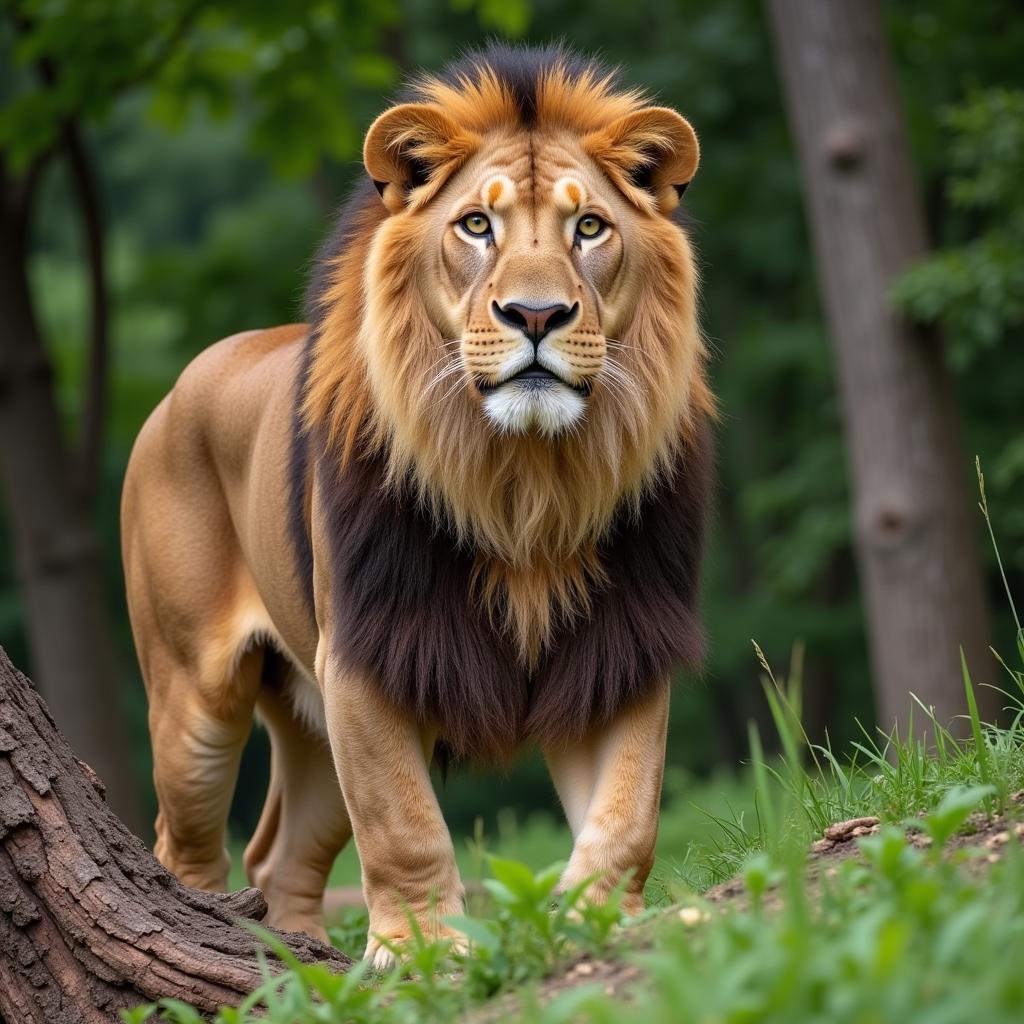Asiatic Lion vs African Lion: A Majestic Showdown
The fascinating world of lions often sparks the question: what’s the difference between an Asiatic Lion Vs African Lion? While both share the title “King of the Jungle,” distinct characteristics set these majestic creatures apart. This article delves into the nuanced differences between these two lion subspecies, exploring their physical attributes, habitats, social structures, and conservation status.
Unveiling the Differences: Asiatic Lion vs. African Lion
Although closely related, the asiatic lion and african lion exhibit key differences that have shaped their evolution and survival. These variations span from physical traits and social dynamics to geographical distribution and the ongoing conservation efforts dedicated to their protection. Let’s dissect these distinctions to better understand these magnificent felines.
Physical Attributes: Spotting the Subtleties
One of the most noticeable differences lies in their mane. The African lion typically sports a much larger, fuller mane, often covering the head, neck, and shoulders. The Asiatic lion, in contrast, has a less developed mane, often concentrated around the ears and neck. Additionally, Asiatic lions possess a characteristic longitudinal fold of skin along their belly, a feature absent in their African counterparts. They are also slightly smaller in size compared to African lions.
Habitat and Distribution: A Tale of Two Continents
As their names suggest, these lion subspecies inhabit different continents. African lions are widespread across sub-Saharan Africa, thriving in diverse habitats ranging from savannas and grasslands to woodlands. Asiatic lions, on the other hand, are found exclusively in the Gir Forest National Park in Gujarat, India. This restricted habitat makes them significantly more vulnerable to environmental changes and disease outbreaks.
Social Structure: Pride Dynamics
While both subspecies live in prides, some variations exist in their social structures. African lion prides tend to be larger, often consisting of several related females, their cubs, and a coalition of males. Asiatic lion prides are generally smaller, with fewer females and often only a single male or a pair of males. This difference might be attributed to the limited resources and smaller territory size available to Asiatic lions.
Conservation Status: A Fight for Survival
Both Asiatic and African lions face conservation challenges, but the Asiatic lion is critically endangered due to its limited population and restricted habitat. Poaching, habitat loss, and human-wildlife conflict pose significant threats to their survival. Extensive conservation efforts are underway to protect and increase the Asiatic lion population.
Frequently Asked Questions: Asiatic Lion vs African Lion
- What is the main difference between an Asiatic and African lion? The most prominent difference is the size and density of their mane. African lions have larger, fuller manes, while Asiatic lions have smaller manes.
- Where do Asiatic lions live? Asiatic lions are found only in the Gir Forest National Park in India.
- Are Asiatic lions endangered? Yes, Asiatic lions are critically endangered.
- Why are Asiatic lions endangered? Habitat loss, poaching, and human-wildlife conflict are the primary threats to Asiatic lions.
- What do lions eat? Lions are carnivores and primarily hunt large ungulates like zebras, wildebeest, and buffalo.
- Do Asiatic lions live in prides? Yes, like African lions, Asiatic lions also live in prides, although their prides are generally smaller.
- How big are Asiatic lions compared to African lions? Asiatic lions are slightly smaller than African lions.
 Asiatic Lion in Gir Forest
Asiatic Lion in Gir Forest
Conclusion: Preserving Majestic Kings
The asiatic lion and african lion, though separated by geography, remain captivating symbols of power and grace. Understanding their unique characteristics and the conservation challenges they face is crucial for their continued survival. By supporting conservation efforts and raising awareness, we can contribute to protecting these magnificent creatures for generations to come. Remember the key differences in mane size, habitat, and social structures, and let’s continue to learn about these incredible animals.
More Questions?
If you need further assistance, please don’t hesitate to contact us: Phone: +255768904061, Email: kaka.mag@gmail.com or visit us at Mbarali DC Mawindi, Kangaga, Tanzania. We have a 24/7 customer service team.




